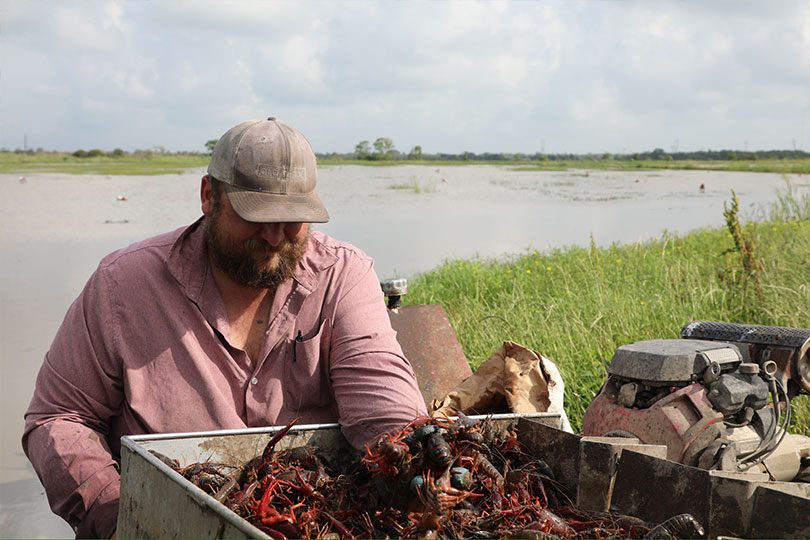By Emmy Powell
Communications Specialist
Texas students learned about crawfish through Texas Farm Bureau’s (TFB) Farm From School program in April.
Kindergarten through fifth-grade students across Texas virtually “meet” with a farmer or rancher once a month through Farm From School on a video conferencing app.
This month, Aaron Permenter, a crawfish and rice farmer in Hamshire, gave students a tour of his farm and taught students all about crawfish.
“Farm From School gives students a unique, firsthand look at agriculture, and Aaron’s tour of his crawfish farm was a highlight of the semester,” said Jordan Bartels, TFB associate director Organization Division, Education Outreach. “Even through a screen, students were able to see the farm in action, ask questions and connect what they’re learning in the classroom to what happens on the farm.”.
During the 30-minute virtual session, Permenter demonstrated how crawfish traps work, showed the boat used for harvesting and explained the factors involved in raising crawfish.
Crawfish are harvested in the spring. Farmers place bait in their crawfish traps and let it sit in the water for 12 to 24 hours before they harvest. Once the traps are hauled into the boat, the contents are poured onto a sorting table where crawfish are separated from other items in the trap, such as grass, bait remnants, frogs and snakes.
Permenter explained that their crawfish—Red Swamp Crawfish—are brought in from Louisiana to restock the ponds each year after rice harvest.
“These are not your wild native crawfish,” he said. ”These are brought in out of Louisiana to restock the ponds,” Permenter told the students. “This is what we catch the following year and sell to restaurants.”
He has about 1,500 traps that he checks six days a week. Depending on conditions, the water depth ranges from one foot to 18 inches deep. They catch between 200 and 1,000 pounds of crawfish a day.
Students were curious about predators and learned that freshwater otters, turtles and frogs like to eat crawfish. Permenter also taught students about the bait used to attract crawfish.
“It is a mixture of corn, a little bit of fish oil, and corn meal,” he said. “We break it into half, and we put it in the traps. Then, we come back the next day to harvest.”
The students learned how to tell the difference between the male and female crawfish. Permenter noted that male crawfish have an extra set of legs, but they usually have more females.
Crawfish are separated into peelers, medium and large sizes.
Peeler crawfish go to processing plants, where they are peeled, and the meat is packaged for the frozen section in supermarkets.
Permenter also explained the growth cycle.
“Every 30 days, they get bigger. They molt, meaning they shed their old shell.” he said.
There can be up to three crops of crawfish in a season, which typically runs from January to July.
Permenter also shared a few fun facts about crawfish with the students. Crawfish are often called “mudbugs” because they burrow into the ground and come out with mud on them.
While most crawfish are red or white, they can also be blue. But that’s extremely rare. Out of nine years of harvesting crawfish, Permenter said he’s only seen about six blue crawfish.
More information about Farm From School
Through Farm From School, kindergarten through fifth-grade students virtually meet with a farmer or rancher once a month. This semester, students learned about composting and pickles. The final session in May will be about ice cream.
The program will return again in the fall. More details for the fall semester will be announced later this summer.
Details about the program, including dates and featured commodities, will be added on the Agriculture in the Classroom webpage as they become available.


Leave A Comment